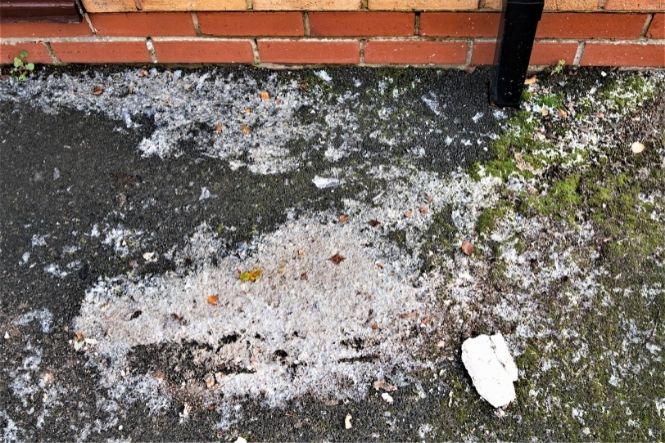How do you cope with fflorescence on concrete driveways? The problem of efflorescence is common on many types of hard-surfaced areas where water has been allowed to sit.
Any form of concrete, from bricks to paving slabs, can suffer from efflorescence. This is discolouration, or bloom, caused by salt deposits on the material. Much to the annoyance of builders and homeowners alike, there are no silver bullets or guaranteed ways to prevent this blooming from happening. But there are some tips and tricks that can reduce its effect.
Table of Contents
Primary And Secondary Efflorescence
Efflorescence doesn’t always need time to appear on paving as the chemical reaction that causes it can also take place in the manufacturing process. The slabs can therefore have the discolouration fresh out of the bag. This type of efflorescence is called primary efflorescence. Efflorescence that has occurred after the Paving Slabs Have Been Laid, cleaned and given time to settle in is known as secondary efflorescence.
It’s All About The Chemicals
Put simply, and without going into a whole bunch of chemical equations, concrete is made in part with limestone. This reacts in different ways, at different times, to water (from rain or the ground) and carbon dioxide in the air to create a salt deposit. This salt is deposited from the liquid seeping through the pores onto the surface of the paving. This process can take place no matter how expensive your materials, or how you put them together. It is a natural process and nature often wins through!
What Can Be Done?
As this is a chemical reaction there are chemicals that can be used to try to prevent efflorescence. One method is the use of a jollop, or a chemical sealant, which blocks the salt from getting through. Obviously, there are no guarantees as to exactly what the result will be, as with any chemical reaction, so be careful and test on a secluded area first.
As a further warning, this method can unfortunately lead to other problems, like totally re-colouring the concrete. Or it may block the escape of the salt from one place but the salt may find an alternative route out and form worse bloom elsewhere, even damaging the concrete itself.
Power washers are now cheap and easily available but care needs to be taken when using them. They will certainly remove a lot of the deposits, but they can also damage the top surface of a drive, particularly with Concrete Slabs. Anything that’s even more abrasive, such as sand-blasting, is best left alone.
Let Nature Do Its Job (And Scrub If Needs Be)
As there is no absolute rule for how long the efflorescence will last (from days to years if you let it run its course), one realistic strategy is to simply let the concrete settle into its surrounding and go with the natural look that accompanies the bloom.
If the paving is in an area where there it is being walked on, driven across or even battered by the weather, the bloom will eventually be worn away by natural wear and tear. If this is not the case, it can be assisted in its wear and tear by scrubbing it each time it reappears.
Conclusion
In conclusion, efflorescence is inevitable in any form of hard-surfaced area, and the only way to rid yourself of it entirely is to use or store your materials in a manner that will encourage the salt not to do its thing.

